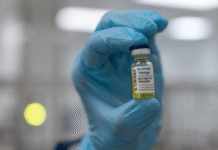BRASSICA vegetables are economically important vegetables with high nutritional value. CRISPR-Cas9-mediated gene editing has been demonstrated in several crops but not in Brassica vegetables.
For the first time, researcher Haoru Tang from Sichuan Agricultural University in China and colleagues demonstrate the applicability of CRISPR-Cas9 in editing genes in Chinese kale, a Brassica vegetable that has good flavor and high levels of antioxidants and anticarcinogenic compounds, including vitamin C, carotenoids, total phenolics, and glucosinolates.
The researchers targeted the phytoene desaturase (PDS) gene, which is commonly selected as the target gene for CRISPR/Cas9 experiments in plants because disrupting this gene results in an albino phenotype, which is easily recognisable. Homologous PDS genes BaPDS1 and BaPDS2 were targeted in this study through Agrobacterium-mediated genetic transformation.
Results showed more than three-fourths of the plants with mutations, where one-fifth have mutations for both homologous genes and more than half mutation for either of the homologous genes.
These results indicate the high applicability of the CRISPR-Cas9 technology in Chinese kale and Brassica vegetables, providing a foundation for more studies in such species.

















